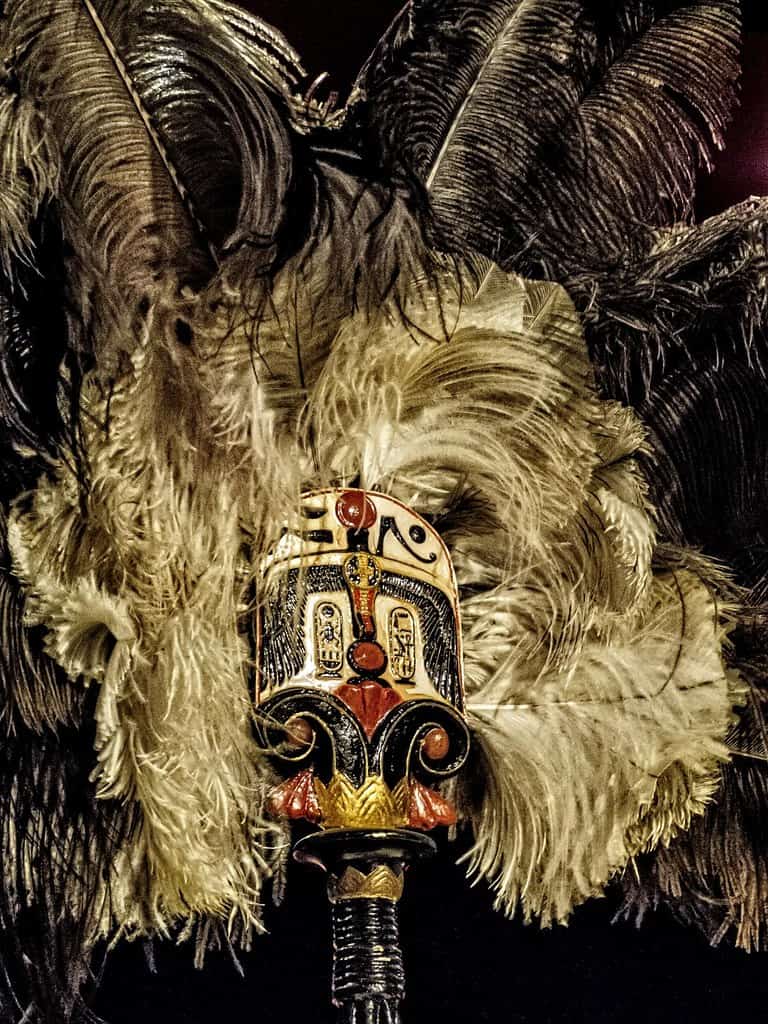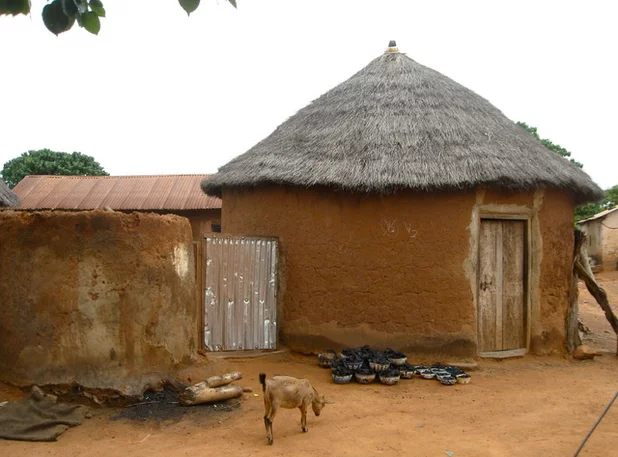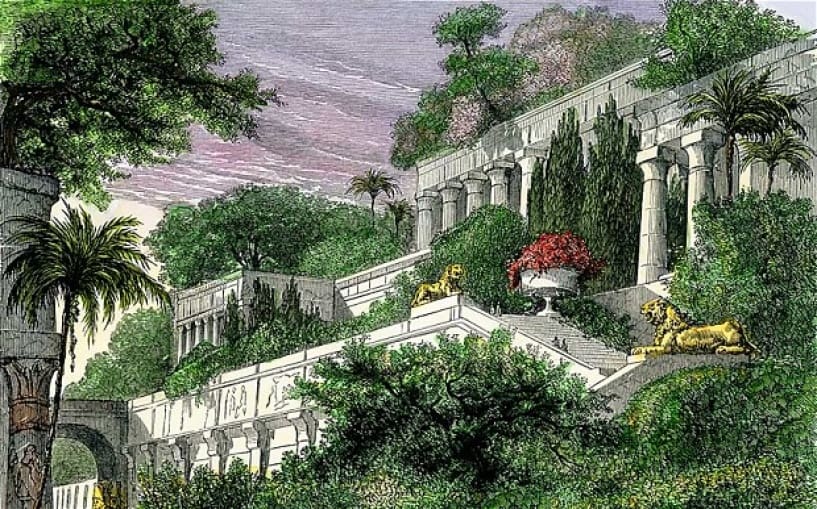Since time immemorial, human beings have made efforts to achieve better living conditions. When the weather was cold, ancient people used fire to produce heat in their homes. Every child knows that fire is the eternal solution to keeping warm inside when it is cold outside.
But a few people are conscious of how smart and clever the people in antiquity were and what interesting cooling solutions they designed and built for cooling off their dwellings to feel the refreshing breeze inside when it is very warm outside.
But a few people know that ancient people also designed interesting cooling solutions for their dwellings to feel the refreshing breeze inside when it is very warm outside.
Table of Contents
- The First (Ancient) Geothermal Cooling System
- Hand Fans were First Used in Egypt 6000 Years Ago
- The Folding Hand Fan Was Invented in Japan and Then Taken to China
- The Water-Cooling Air Conditioning Was Invented by the Egyptians
- Ancient Romans Built Aqueducts in the Walls to Cool Down
- Windcatchers Were Built to Cool the Air in Persia
- Passive Solar Architecture
- The Traditional Mud-plated Houses in the African Savannah
- Batak Architecture for Natural Ventilation
- The Hanging Gardens of Babylon are Actually a Green Roof
The First (Ancient) Geothermal Cooling System
During the Neolithic period 12,000 years ago (10,000 BC), hunter-gatherers were the first to benefit from geothermal cooling. People can now set up a more stable daily routine.
They hunted wild animals and gathered berries, nuts, and mushrooms to eat, and during that period, human life became more secure. They lived in caves as a refuge from wild animals and as a shelter. And to make them more comfortable during the heat, they built burrows under the earth.
So, the Cave Dwellers built the first geothermal-cooled homes.

Hand Fans were First Used in Egypt 6000 Years Ago
Hand fans have been traced back to Egypt as far as 6,000 years ago (4,000 BC). The first-hand fans were extremely simple and natural. The Egyptians implored their servants to fan them with palm leaves, and this is actually the invention of the hand fan.

But in these ancient times, the hand fan was also a sacred instrument used in religious rites. It was also seen as a sign of power and authority. Two magnificent fans were discovered in King Tut’s tomb—much more lavish than just some palm leaves.
One of these fans featured a gilded handle and was covered with ostrich feathers, while the other was made of ebony and was encrusted with gold and beautiful stones.



According to Greek and Roman writings as well as the Bible, other ancient peoples such as the Hebrews, Persians, Greeks, and Romans also used hand fans.
The Folding Hand Fan Was Invented in Japan and Then Taken to China
Some sources say that the folding hand fan was first made in Japan in the 9th century. It was then taken to China. But there are legends about it in both countries. The Chinese claim that a woman fanning her face mask at a festival served as inspiration for the fan, whereas the Japanese claim that the way a bat’s wings fold served as inspiration.


There was a time when fans were really used as masks. Women hid their faces behind the fans at ceremonies, and this way, they didn’t have to greet equal-ranking officials passing by.
Whatever its origins, the folding fan made its way to Europe via trade routes in the 1500s, where it became an exotic and fashionable sign of wealth and class.
The Water-Cooling Air Conditioning Was Invented by the Egyptians
The ancient Egyptians were the first to use water to produce a cooling breeze in the stifling air. They placed damp reeds or cloth on the windows and doors of their homes. The wind blowing into the house was cooled down by the wet reeds and fabrics.
This humidified the air, which was an additional benefit of this hand-held air conditioning given the dry climate at these latitudes. Nowadays, misting coolers are used for this purpose.

As the climate in Egypt was very hot and dry, water was widely used to refresh and cool the air. Water-filled porous vessels, lakes, pools, and gutters were used in different ways in buildings. The places were carefully selected. They had to be shaded and surrounded by stone walls.
In this way, there were areas in the homes that provided shelter from the heat. In the bedrooms, shallow pottery filled with water was frequently placed on a bed of straw. The fumes brought coolness.
Ancient Romans Built Aqueducts in the Walls to Cool Down
Water was revered in ancient Rome. It was transported from various sources to cities through aqueducts. The word comes from “aqua” meaning “water” and “ducere” meaning “lead”. The water that was transported to the towns was used for drinking needs, irrigation, and for various thermal baths (baths) and fountains.
This method of water supply originates from the Middle East. While the aqueducts were first used by the Assyrians. Especially in Rome, the water was transported via 11 aqueducts, with a total length of almost 350 km. and only 47 km of terrestrial thermae.

But it is really impressive how the ancient Romans used water to cool down their homes. The water runs through tunnels in the walls to cool them off, and this way, the air in the room. To maximize the cooling effect, they added ice bought from vendors.
Snow was stored in underground pits and was more expensive than wine during the warmer months. The Romans also had a frigidarium, a special room with a cool pool, at their disposal. It was designed for cooling during the warmer months.

But what did they use in Rome? There, aqueducts located in the walls of the house were used to cool the premises.
Windcatchers Were Built to Cool the Air in Persia
People in ancient Persia also stayed cool indoors by using specific architectural elements in the construction of buildings, water tanks, and wind towers. The premises were mainly built of thick ceramics with high insulation properties.
The buildings were very close to each other, with high walls and ceilings and maximum shade for the ground level. The windows were small and away from direct sunlight. The indoor air was kept cool through the strategic construction of courtyards and gardens with a fountain and shading. The high ceilings were crowned with a dome, which facilitated better air circulation. Systems of tanks and wind towers that cooled the premises on warm days.

In Ancient Times, windcatchers were an important architectural element for providing natural ventilation in structures. A windcatcher is a shaft that rises high above a structure and has an opening that faces the prevailing wind. It used to catch and channel wind from above the building, where it was stronger and cooler, into the building’s interior.

There was another type of windcatcher in which air was rising, not going down. For this purpose, they used temperature differences generated by the wind or sun. Typically, these systems include an underground channel called a qanat.

The ground and the water in the canal cooled the warm air before releasing it and allowing it to circulate inside the house. The coolness intensified the moisture from the air duct. Then, a wind tower with an opening facing the leeward side led it.
In these systems, the so-called “Coanda effect,” also called the “teapot effect,” The physical phenomenon is named after its discoverer, the Romanian scientist Henri Coanda. In 1932, he found that liquid flowing through a spout stuck to its walls under certain conditions, even when he had to make a sharp turn. This is because the barriers make it hard for air to flow freely on one side, creating a vortex in the area with lower pressure.

This principle is also used in the manufacture of modern air conditioners in order to create conditions for the adhesion of air jets to the ceiling. This ensures better air circulation in the room.
When the air conditioner is installed close to the ceiling, the jet deforms shortly after it runs out. It sticks to the ceiling because there is pressure in the circulation area. This is exactly the effect of Coanda. It is used when we need to supply cooler air to the room we want to ventilate than the one inside.
This is exactly the effect created by the Persian air capture towers. They can have one or four open sides, depending on their purpose. Sometimes, they are octagonal to catch the maximum amount of wind. Even when there is no wind, the towers work in the direction of cooling, removing warm air from the premises.

According to Hassan Fathy, a well-known Egyptian architect, the windcatchers were invented in Egypt. They were further developed in the Middle East, North Africa, and India until reaching their pinnacle in Islamic architecture.
While some researchers credit Persia with inventing windcatchers, there is significant historical evidence of their use in ancient Egypt dating back to 1300 BCE. It was shown in detail in a wall mural of Neb Amoun’s residence at Luxor’s Tel El-Amarna tombs, which is now in the British Museum.
Anyway, the windcatchers called shish-khan were built on homes in Persia. The traditional Persian water tank was called Ab Anbar. Combined with a wind trap system, it kept its water content icy, even on extremely hot days.
There is one more specific architectural element in the ancient Middle East: balconies with a specific design. They were known as mashrabiya or shanasheel and were both fashionable and functional.

Often, stained glass glazing was used, as well as beautifully carved wooden frames and elements. There were special openings in the wooden lattice structure, so air might circulate on all three sides of the balcony. This delivered fresh air inside the rooms. Usually, a clay pot with water is placed on this special balcony in order to cool the passing air even more.
Passive Solar Architecture
The Anasazi Indians lived from the 12th century BC until about 1300 AD in the southwestern territory of the United States, where the climate is mostly desert. Their rock dwellings in Mesa Verde National Park, southern Colorado (a part of the UNESCO World Heritage List), are popular around the world as an excellent example of passive solar architecture. The city is located under a stone canopy, which serves as strategic shading. The exposure is south.

This conclusion was also made by Aeschylus about 2,500 years ago. He wrote “Only the ignorant and barbarians do not know that the house should be oriented to the winter sun.” The home should be smartly located to collect heat from the winter sun but also be in the shade in the summer heat. Today, this principle is also fundamental, especially in the construction of passive homes.
The Traditional Mud-plated Houses in the African Savannah
The traditional mud-plated houses in the African savannah also provide coolness. Round houses with thatched roofs are still used today. The walls keep the interior cool. Similar homes plastered with mud, as already mentioned, exist on other continents.

Batak Architecture for Natural Ventilation
In Southeast Asia, special houses on stilts have brought coolness and comfort to their inhabitants from ancient times to the present day. The Batak people of North Sumatra, Indonesia, have such buildings. These homes are made of waterproof wood or bamboo. They rise above the ground or water surface. Their “elevation” protects them from floods and various pests. They allow abundant natural ventilation and dry quickly.

The Hanging Gardens of Babylon are Actually a Green Roof
In some ancient countries, green roofs were used for cooling. Plants such as moss, grass, and bark provided a rudimentary type of insulation to keep the house cool in the summer and warm in the winter, dating back to the earliest recorded construction.

The Hanging Gardens of Babylon, one of the Seven Wonders of the Ancient World, has a famous historic green roof. These were built in 500 B.C. and had a waterproof layer made of tar and reeds, as well as plants and trees planted on top. Green roofs were also widespread in ancient India.
In the 21st century, there is a large variety of cooling solutions, from mini fans that you may wear around your neck to large and commercial air conditioning systems. And you may stay cool everywhere—in your home or office, in the garden (patio), walking, traveling, camping, on the beach, etc.
